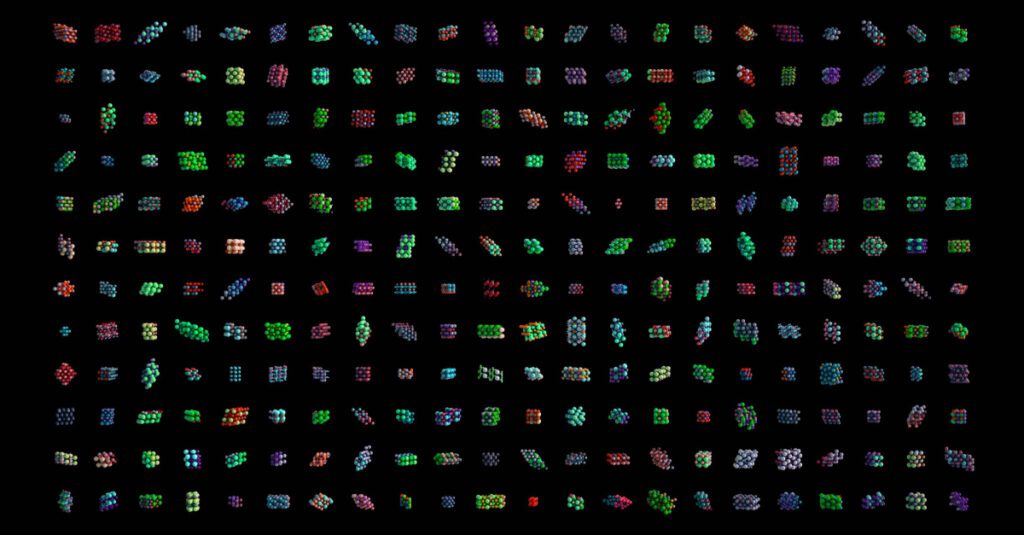Revolutionizing Materials Science with MatterGen: The Future of AI-Driven Innovation
In the realm of technological advancements, materials innovation stands as a cornerstone. Consider how the discovery of lithium cobalt oxide in the 1980s paved the way for lithium-ion batteries, now essential for everything from mobile phones to electric vehicles. With such breakthroughs impacting billions globally, it’s clear that the quest for new materials is more than just a scientific pursuit; it’s a vital leap towards a sustainable future. This need extends to solar energy technologies and efficient carbon dioxide recycling methods as well.
However, the journey of discovering a new material often feels like searching for a needle in a haystack. Traditionally, researchers relied on a laborious and costly trial-and-error process. While computational screening has accelerated this process, the challenge remains daunting. Identifying materials with desired properties still demands sifting through millions of potential candidates.
Enter MatterGen, a groundbreaking generative AI tool that reshapes materials discovery. Rather than combing through existing materials, MatterGen generates new candidate materials tailored to specific design requirements. Whether it’s chemistry, electronic, magnetic, or mechanical properties, MatterGen opens the door to endless possibilities, moving beyond the conventional limit of known materials.
The Science Behind MatterGen
MatterGen employs a novel diffusion model designed specifically for the three-dimensional geometry of materials. In a manner akin to how image diffusion models create visuals from text prompts, MatterGen constructs material structures by modifying random elements and their arrangements to meet designated criteria. This innovative architecture adeptly handles the complexities of periodicity and 3D geometry, resulting in a robust approach to materials design.
Backed by data from over 608,000 stable materials, MatterGen’s base model showcases state-of-the-art performance, significantly bolstered by sophisticated architecture and a rich training dataset. Researchers can easily fine-tune the model to produce materials based on distinct constraints, effectively generating structures that meet specific chemistry and material property requirements.
MatterGen vs. Traditional Screening
The foremost advantage of MatterGen is its sheer ability to explore the uncharted territories of unknown materials. Unlike traditional screening methods that plateau after filtering through known candidates, MatterGen continues to yield unique materials with exceptional properties. For example, it has demonstrated proficiency in identifying structures with a bulk modulus exceeding 400 GPa—materials renowned for their resistance to compression.
Addressing Compositional Disorder
One fascinating challenge in material development is compositional disorder, a phenomenon where atoms swap positions randomly within a structure. Most algorithms currently employed in computational design struggle to differentiate between nearly identical structures with minimal variations. To tackle this, MatterGen introduces a new structure-matching algorithm that recognizes these permutations, redefining concepts of novelty and uniqueness in materials.
Experimental Validation of MatterGen
The capabilities of MatterGen don’t just exist in the realm of the theoretical; they have been validated through real-world laboratory synthesis. Partnering with researchers from the Shenzhen Institutes of Advanced Technology, the team successfully created a novel material, TaCr2O6, generated by MatterGen using specific design parameters. The resulting structure closely mirrors the model’s predictions, affirming the accuracy and potential influence of AI in material science.
The Future: AI-Driven Material Discovery
MatterGen embodies a transformative shift in materials design, propelled by generative AI technology. Its capacity to delve into significantly larger material spaces promises to revolutionize various domains, from battery technology to advanced magnets and fuel cells. By synergizing with tools like MatterSim, which accelerates material properties simulation, MatterGen creates a powerful ecosystem for innovation.
To ensure widespread impact, MatterGen’s source code and relevant training data have been made publicly available under the MIT license, inviting collaboration and growth within the scientific community.
In the words of Christopher Stiles, a computational materials scientist at Johns Hopkins University Applied Physics Laboratory, "We are interested in understanding the impact that MatterGen could have on materials discovery." With such enthusiasm from experts, the future appears bright.
As we move forward into a new era defined by generative AI, MatterGen illuminates the remarkable possibilities of materials science. Its implications for practical applications could reshape how we construct technologies crucial to our everyday lives.
The AI Buzz Hub team is excited to see where these breakthroughs take us. Want to stay in the loop on all things AI? Subscribe to our newsletter or share this article with your fellow enthusiasts.




